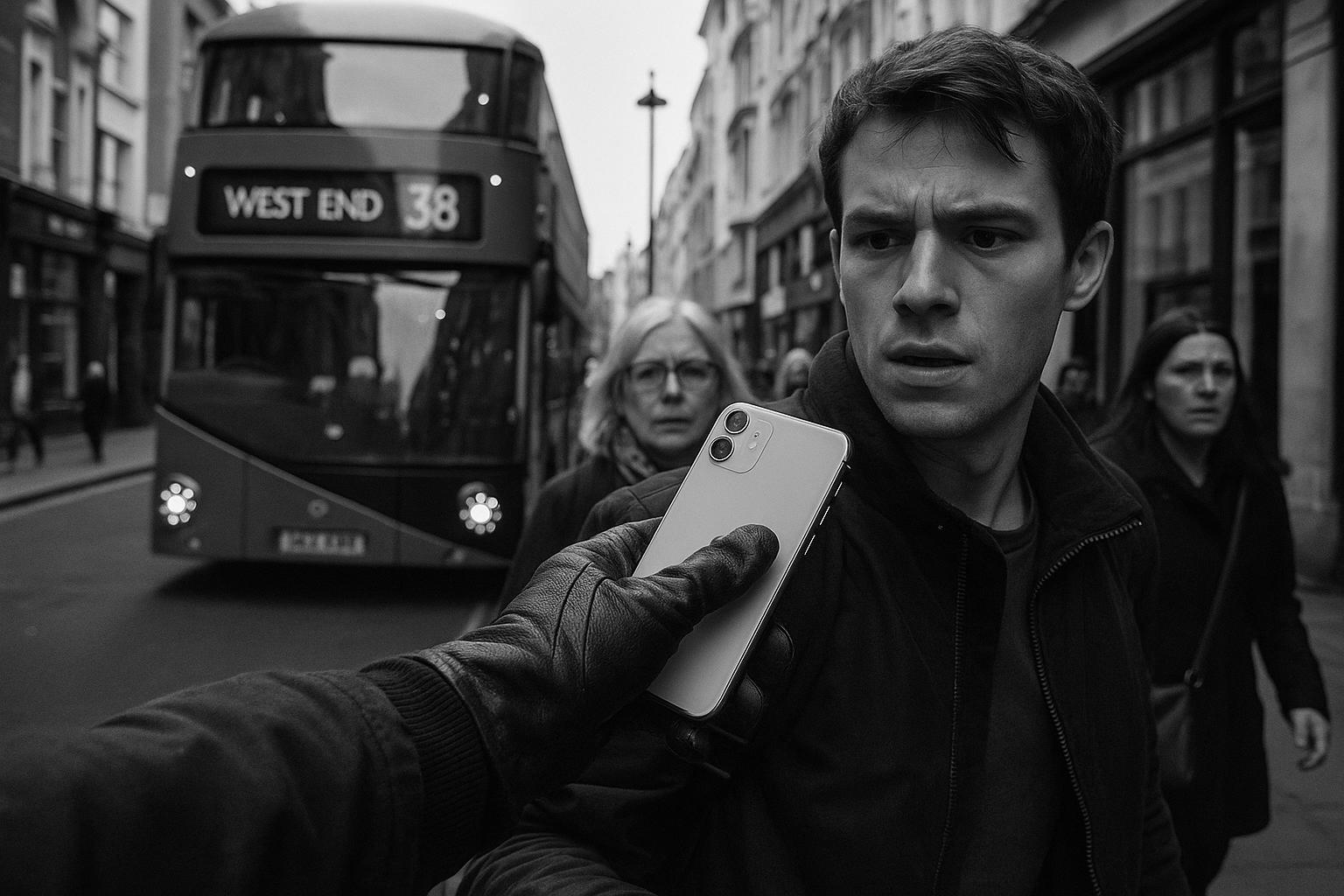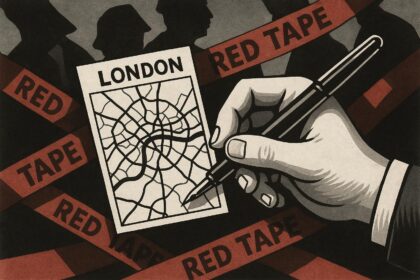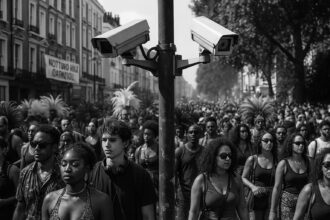London has seen a threefold rise in mobile phone thefts over four years, with stolen devices trafficked through Hong Kong and Shenzhen markets, driving a £50 million criminal industry. Police and city leaders call for tech firms to introduce kill switches as crime escalates.
Mobile phone theft in London has escalated dramatically over recent years, underscoring a growing criminal industry with far-reaching international links. Metropolitan Police figures reveal that nearly 231,000 phone thefts and robberies were reported over the past four years, representing a threefold increase. In 2022 alone, approximately 70,137 devices were stolen across the capital—roughly one every seven-and-a-half minutes. This surge in theft, much of it orchestrated by gang members on electric bikes or mopeds, has transformed into a lucrative underworld industry estimated to be worth around £50 million annually.
A significant driver behind the renewed profitability of phone thefts is the persistent demand in overseas markets, particularly in Asia. Stolen phones from London’s bustling streets are often trafficked through Hong Kong, a key hub owing to its streamlined customs procedures and established trade networks. Investigations, including individual accounts tracked via Apple’s FindMy app, show stolen devices arriving at locations like Hung To Road in Kwun Tong, Hong Kong—nearly 6,000 miles from their point of theft. Merchants here purchase used smartphones in bulk, often at prices vastly lower than in the UK; for instance, a used iPhone 16 Pro can be bought for around £500, roughly half the cost in London.
In this porous international supply chain, the progression of a stolen phone typically follows multiple hands: thieves sell to local handlers, who then pass the devices to smugglers, ultimately ending in overseas resale or dismantling for parts. A locked iPhone 15 stolen in London may sell first for about £100 domestically, then resell for £200 to a smuggler, and commanded a price near £400 once abroad. This escalating value chain provides strong incentives for continuing thefts despite law enforcement efforts.
Hong Kong’s role as a transit hub is complemented by prominent electronics markets elsewhere in Asia, notably Shenzhen, China. The Feiyang Times building in Shenzhen’s Huaqiangbei market—dubbed the “stolen iPhone building”—is a major centre for global resale and disassembly of second-hand smartphones. Here, locked or remotely disabled devices sourced from Western cities are often dismantled and sold for parts, feeding a shadowy ecosystem sustained by demand from developing nations. Legal oversight remains limited, as much of this trade operates through private vendors in loosely regulated markets.
Back in London, the West End and tourist-frequented areas like Pall Mall and St James’s Palace are hotspots for theft, with recorded incidents reaching a daily average of 37 in some places. Many offenders use swift grab-and-run tactics, snatching phones directly from pedestrians’ hands. The rise in these crimes has heightened concerns about personal safety; recent statistics from 2022 also show a worrying increase in the use of weapons during gadget thefts, with knives involved in over 2,400 incidents resulting in around 180 injuries—a 35% year-on-year rise.
Police and city officials acknowledge the limitations of enforcement alone in tackling this issue. Metropolitan Police Commander James Conway emphasised that arrests alone will not solve the problem, pointing to the need for technological solutions from the mobile phone industry. Both the Mayor of London and the Metropolitan Police Commissioner have urged manufacturers like Apple and Google to develop and implement “kill switches” that would render stolen phones useless by preventing connection to cloud services when reported stolen. This measure aims to reduce the incentive for thieves by making stolen devices less valuable.
In the meantime, residents are advised to take preventive measures such as avoiding phone use in public places and sticking to well-lit streets. However, as the thefts become more organised and linked to global black markets, addressing this issue will require coordinated action between law enforcement, technology firms, and international trade authorities to disrupt the complex supply chains fueling this criminal enterprise.
 Reference Map:
Reference Map:
- Paragraph 1 – [1], [4], [2]
- Paragraph 2 – [1], [4]
- Paragraph 3 – [1]
- Paragraph 4 – [3], [1]
- Paragraph 5 – [2], [4]
- Paragraph 6 – [6], [4]
- Paragraph 7 – [1], [7]
- Paragraph 8 – [2], [7]
Source: Noah Wire Services
- https://www.express.co.uk/news/world/2087167/major-city-asia-where-phones – Please view link – unable to able to access data
- https://www.standard.co.uk/news/london/london-mobile-phone-thefts-hit-a-record-high-b1235383.html – Mobile phone thefts in London’s West End have reached a record high, with an average of 37 incidents reported daily. Over the past four years, nearly 231,000 phone thefts and robberies were reported in London, marking a threefold increase. The West End, a popular area for tourists, accounted for almost 40,000 of these incidents. Other hotspots include areas around Pall Mall, Clarence House, and St James Palace. The Metropolitan Police attribute this surge to organized crime gangs selling stolen phones on the overseas black market or dismantling them for parts, a criminal enterprise worth £50 million annually. Residents are advised to stick to well-lit streets and avoid using their phones in public to reduce the risk of theft. ([standard.co.uk](https://www.standard.co.uk/news/london/london-mobile-phone-thefts-hit-a-record-high-b1235383.html?utm_source=openai))
- https://www.ft.com/content/752f84ac-329d-4e10-ae46-7a1c27319498 – The Feiyang Times building in Shenzhen, China, known online as the ‘stolen iPhone building,’ serves as a hub for the global resale and disassembly of second-hand smartphones. Situated in the electronics market area of Huaqiangbei, the building’s upper floors specialize in second-hand iPhones, many of which originate from Western countries and pass through Hong Kong before reaching China. While some phones are legitimate trade-ins, a significant number are stolen devices, often remotely locked, that are dismantled and sold for parts. Tech entrepreneur Sam Amrani tracked his stolen iPhone 15 Pro from London to Feiyang, illustrating the rapid and organized nature of this illicit supply chain. Feiyang and similar markets attract traders globally, especially from the Global South, seeking affordable devices or parts. SIM-locked US models are particularly prized due to lower duties and resale opportunities. Hong Kong’s status as a free trade port facilitates this flow, with wholesalers conducting daily auctions for ‘iCloud locked’ devices. Despite legal gray areas and rising theft concerns in cities like London and Paris, authorities have limited oversight due to the private nature of vendors involved. Traders admit that demand in Shenzhen for locked or ID-tagged phones continues to sustain this shadowy marketplace. ([ft.com](https://www.ft.com/content/752f84ac-329d-4e10-ae46-7a1c27319498?utm_source=openai))
- https://www.standard.co.uk/news/crime/mobile-phone-theft-london-figures-met-police-b1215933.html – In London, mobile phones are being stolen at a rate of one every seven-and-a-half minutes, with 70,137 devices taken last year—an average of 192 per day. This surge has transformed phone theft into a £50 million underworld industry, with most devices being sold or disassembled for parts in China. Thefts are often carried out by gang members on mopeds or electric bikes who snatch phones from owners’ hands and flee before anything can be done. High-profile incidents, such as the targeting of Lady Victoria Hervey after a London Fashion Week event, highlight the prevalence of this crime. ([standard.co.uk](https://www.standard.co.uk/news/crime/mobile-phone-theft-london-figures-met-police-b1215933.html?utm_source=openai))
- https://www.theguardian.com/uk-news/2023/aug/09/nearly-two-fifths-of-robberies-in-london-last-year-were-for-mobile-phones – In London, nearly 40% of personal robberies last year involved mobile phones, equating to over 9,500 offences. Overall, mobile phones accounted for nearly 70% of all thefts in the city. The Metropolitan Police have called on mobile phone manufacturers to collaborate in developing solutions to make these crimes less rewarding. The rise in phone thefts has been linked to organized criminal gangs exploiting the ease of accessing valuable data stored on smartphones. ([theguardian.com](https://www.theguardian.com/uk-news/2023/aug/09/nearly-two-fifths-of-robberies-in-london-last-year-were-for-mobile-phones?utm_source=openai))
- https://www.directlinegroup.co.uk/en/news/brand-news/2023/230623.html – In 2022, gadget thefts in London increased by 41%, with 108,900 gadgets reported stolen, including 89,633 mobile phones. The use of e-scooters and e-bikes in these thefts rose by 185% year-on-year. Weapons such as knives were used in 2,480 gadget thefts, resulting in 180 injuries—a 35% increase from the previous year. The rise in gadget thefts has raised concerns about personal safety and the effectiveness of current crime prevention measures. ([directlinegroup.co.uk](https://www.directlinegroup.co.uk/en/news/brand-news/2023/230623.html?utm_source=openai))
- https://www.london.gov.uk/media-centre/mayors-press-release/mayor-of-london-and-met-commissioner-call-on-mobile-phone-industry-to-play-their-part-in-reducing-robberies – The Mayor of London and the Metropolitan Police Commissioner have called on the mobile phone industry to collaborate in reducing robberies. In 2022, there were 38,996 thefts from individuals involving mobile phones, accounting for 68% of all such offences. The Metropolitan Police have urged phone manufacturers to develop solutions to make these crimes less rewarding, emphasizing that they cannot arrest their way out of the issue. ([london.gov.uk](https://www.london.gov.uk/media-centre/mayors-press-release/mayor-of-london-and-met-commissioner-call-on-mobile-phone-industry-to-play-their-part-in-reducing-robberies?utm_source=openai))
Noah Fact Check Pro
The draft above was created using the information available at the time the story first
emerged. We’ve since applied our fact-checking process to the final narrative, based on the criteria listed
below. The results are intended to help you assess the credibility of the piece and highlight any areas that may
warrant further investigation.
Freshness check
Score:
7
Notes:
The narrative presents recent data on mobile phone thefts in London, with figures from 2022 and 2023. However, similar reports have been published in the past year, indicating that the core information may be recycled. For instance, a report from June 2025 highlights a record high in mobile phone thefts in the West End, with 37 reported on average each day. ([standard.co.uk](https://www.standard.co.uk/news/london/london-mobile-phone-thefts-hit-a-record-high-b1235383.html?utm_source=openai)) Additionally, a February 2025 article details the Metropolitan Police’s seizure of over 1,000 stolen phones in a week-long crackdown. ([news.met.police.uk](https://news.met.police.uk/news/met-seizes-one-thousand-stolen-phones-in-a-week-493558?utm_source=openai)) These instances suggest that while the data may be current, the narrative itself could be a repurposed version of earlier reports. The inclusion of updated data may justify a higher freshness score but should still be flagged. ([standard.co.uk](https://www.standard.co.uk/news/crime/met-police-phone-theft-crackdown-london-b1209407.html?utm_source=openai))
Quotes check
Score:
8
Notes:
The narrative includes direct quotes from Metropolitan Police Commander James Conway and other officials. A search reveals that similar statements have been made in previous reports, indicating that the quotes may have been reused. For example, Commander Conway’s emphasis on the need for technological solutions from the mobile phone industry has been reported in earlier articles. ([standard.co.uk](https://www.standard.co.uk/news/crime/met-police-phone-theft-crackdown-london-b1209407.html?utm_source=openai)) This suggests that the quotes may not be exclusive to this narrative.
Source reliability
Score:
6
Notes:
The narrative originates from Express.co.uk, a UK-based news outlet. While it is a known publication, it has been critiqued for sensationalism and clickbait headlines. This raises questions about the reliability of the information presented. Additionally, the narrative references data from the Metropolitan Police and other reputable sources, which adds credibility. However, the potential for sensationalism in the reporting warrants caution.
Plausability check
Score:
7
Notes:
The narrative presents plausible claims about the rise in mobile phone thefts in London, supported by data from the Metropolitan Police. However, the lack of specific details, such as exact dates and locations for some incidents, reduces the score. The tone and language used are consistent with typical news reporting, but the potential for sensationalism in the reporting warrants further scrutiny.
Overall assessment
Verdict (FAIL, OPEN, PASS): FAIL
Confidence (LOW, MEDIUM, HIGH): MEDIUM
Summary:
The narrative presents plausible claims about the rise in mobile phone thefts in London, supported by data from the Metropolitan Police. However, the potential for sensationalism in the reporting, the reuse of quotes, and the lack of specific details reduce the overall credibility. The reliance on a source with a history of sensationalism and the recycling of content from previous reports further diminish the trustworthiness of the narrative.













